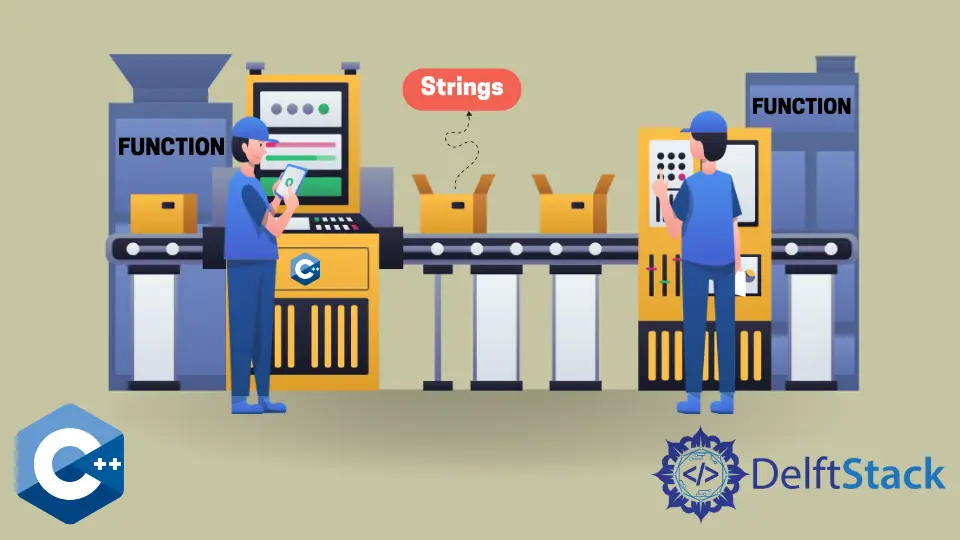如何在 C++ 中从函数中返回一个字符串
-
使用
std::string func()从 C++ 中的函数中返回字符串 -
使用
std::string &func()记法从函数中返回字符串 -
使用
char *func()记法从函数中返回字符串

本文介绍了几种在 C++ 中如何从函数中返回字符串的方法。
使用 std::string func() 从 C++ 中的函数中返回字符串
按值返回是从函数返回字符串对象的首选方法。因为 std::string 类有 move 构造函数,所以即使是长字符串,通过值返回也是高效的。如果一个对象有一个 move 构造函数,那么它就被称为具有移动语义的特性。移动语义意味着在函数返回时,对象不会被复制到不同的位置,因此,提供更快的函数执行时间。
#include <algorithm>
#include <iostream>
#include <iterator>
using std::cout;
using std::endl;
using std::reverse;
using std::string;
string ReverseString(string &s) {
string rev(s.rbegin(), s.rend());
return rev;
}
int main() {
string str = "This string shall be reversed";
cout << str << endl;
cout << ReverseString(str) << endl;
return EXIT_SUCCESS;
}
输出:
This string shall be reversed
desrever eb llahs gnirts sihT
使用 std::string &func() 记法从函数中返回字符串
这个方法使用了通过引用返回的符号,这可以作为解决这个问题的另一种方法。尽管通过引用返回是返回大型结构或类的最有效的方法,但在这种情况下,与前一种方法相比,它不会带来额外的开销。注意,你不应该用引用来替换函数中声明的局部变量,这会导致悬空引用。
#include <algorithm>
#include <iostream>
#include <iterator>
using std::cout;
using std::endl;
using std::reverse;
using std::string;
string &ReverseString(string &s) {
reverse(s.begin(), s.end());
return s;
}
int main() {
string str = "Let this string be reversed";
cout << str << endl;
cout << ReverseString(str) << endl;
return EXIT_SUCCESS;
}
输出:
Let this string be reversed
desrever eb gnirts siht teL
使用 char *func() 记法从函数中返回字符串
另外,我们也可以使用 char *从函数中返回一个字符串对象。请记住,std::string 类以连续数组的形式存储字符。因此,我们可以通过调用内置的 data() 方法返回一个指向该数组中第一个 char 元素的指针。然而,当返回 std::string 对象的空端字符数组时,请确保不要使用类似的 c_str() 方法,因为它取代了指向第一个 char 元素的 const 指针。
#include <algorithm>
#include <iostream>
#include <iterator>
using std::cout;
using std::endl;
using std::reverse;
using std::string;
char *ReverseString(string &s) {
reverse(s.begin(), s.end());
return s.data();
}
int main() {
string str = "This string must be reversed";
cout << str << endl;
cout << ReverseString(str) << endl;
return EXIT_SUCCESS;
}
输出:
This string must be reversed
desrever eb tsum gnirts sihT
Founder of DelftStack.com. Jinku has worked in the robotics and automotive industries for over 8 years. He sharpened his coding skills when he needed to do the automatic testing, data collection from remote servers and report creation from the endurance test. He is from an electrical/electronics engineering background but has expanded his interest to embedded electronics, embedded programming and front-/back-end programming.
LinkedIn